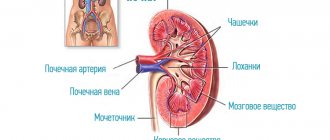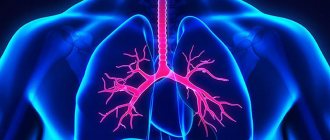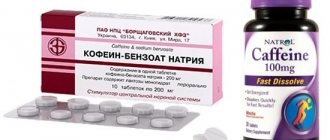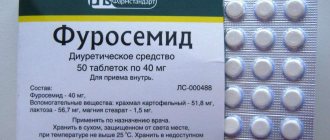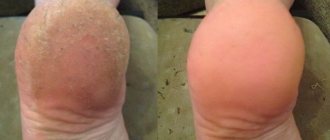The lymphatic system is an integral part of the vascular system of the human body. It performs a number of functions, participates in metabolic processes, and works as a cleansing and protective mechanism. The system of lymph nodes and ducts transports proteins and tissue fluid from the interstitial space into the blood vessels, and transfers fats from the small intestine there. In the space of the lymphatic system, fluid circulates - lymph.
The structure and structure of the lymphatic system in the human body
The structure of the multi-level and complex mechanism includes lymphatic vessels - these are cylindrical cavities through which lymph flows, lymph nodes (small accumulations of lymphatic tissue located in different places throughout the body), lymphatic organs - the thymus, tonsils and spleen.
Content:
- The structure and structure of the lymphatic system in the human body
- What are lymph nodes in the neck
- Inflammation of the cervical nodes: characteristics of the concept
- Causes of inflammatory processes in the lymph nodes
- Symptoms of inflammation of the cervical lymph nodes
- Treatment of inflammation of the lymph nodes of the neck
In addition, two ducts participate in the system - the left and the thoracic, flowing into the right and left subclavian veins, respectively. All these elements are united by a liquid that circulates throughout all cavities - lymph.
The capillaries of the lymphatic system are tubes closed on one side, which together form a network in the tissues and organs of the human body. Capillaries have very thin walls, through which proteins, liquid and large particles freely enter the cavities. Due to the structural features of the walls of blood vessels, these elements are not able to penetrate into the vascular cavities through them, and they enter the blood precisely through the capillaries of the lymphatic system.
In turn, lymphatic vessels are a collection and fusion of small capillaries. In fact, they resemble veins in their structure, but have thinner walls. In addition, they have a large number of valves that regulate the outflow of lymph.
Each vessel passes through its corresponding lymph node. All nodes are combined into several groups located along the vessels. The mechanism of lymph movement looks like this: a large number of small capillaries carry lymph into the node, and from it it leaves through several efferent vessels.
The nodes themselves look like tissue formations, shaped like ellipses or beans, less often ribbon-shaped, up to 2 centimeters long. In these “beans”, lymph is filtered, during which various foreign inclusions are separated and destroyed. They also produce lymphocytes - cells that form part of the body's immune system. The vessels leaving the nodes unite into trunks that form the thoracic and right lymphatic ducts.
Through the right duct, lymph passes from the right arm, right half of the head and chest into the right subclavian vein. The thoracic duct moves fluid from the left upper half of the body to the left subclavian vein. In this way, lymph moves from the interstitial spaces into the blood.
What are lymph nodes in the neck
Lymph nodes are bean-shaped and ribbon-shaped formations of lymphatic tissue. In the neck, the nodes are located in clusters of up to 10 pieces, near blood vessels, mainly large veins.
Their surface is represented by connective tissue, which forms a capsule. Trabeculae extend from it into the node, also connective tissue - the so-called supporting structures, similar to beams.
The internal structural basis of the node is a stroma of reticular connective tissue with process cells. These cells, together with the reticular fibers they form, form a three-dimensional network. The structure of the stroma also includes phagocytic cells of several varieties.
The inner part of the ganglion is called the medulla. Closer to the plane of the capsule is the cortex with a superficial part and a zone of deep cortex.
The accumulation of lymphoid tissue inside the space of the node forms follicles - lymph nodes located closer to the capsule. The deep cortex contains a large number of lymphocytes with a dense and uniform arrangement.
The lymph node, in fact, is a barrier to retain infection, pathologically altered cells, and tumors. It contains the formation of lymphocytes - protective cells that destroy foreign elements.
Cervical lymph nodes are divided into:
- anterior cervical;
- posterior cervical;
- occipital;
- chin;
- submandibular nodes.
In a normal state, a healthy person often cannot feel them, since they are small in size, soft and elastic, and quite mobile under the skin.
Inflammation of the cervical nodes: characteristics of the concept
Lymph nodes tend to become inflamed and increase in size. Why is this happening? The problem is the development of lymphadenitis.
Lymphadenitis is a disease associated with a specific or nonspecific inflammatory process in the nodes. An increase in the size of the nodes is accompanied by a feeling of pain in them. In addition, a person develops a headache, general malaise and weakness, low-grade fever or, less commonly, high fever.
Most often, pathology occurs as a secondary complication in the presence of inflammatory processes of any localization. Infectious agents, together with the toxins they secrete, penetrate into the regional lymph nodes along with the lymph flowing from the primary lesion. In some cases, this focus has already disappeared by the time lymphadenitis appears, and it cannot be recognized. Sometimes the disease occurs as a result of infection entering directly into the lymphatic network through damage to the mucous tissue or skin.
The developing inflammatory reaction is a protective function of the lymphatic system: with the help of such a barrier, the body limits the further spread of pathogenic particles through tissues, organs, and blood.
At the same time, along with the development of inflammation in the nodes, a person may begin to develop purulent processes - sepsis and adenophlegmon. The danger of this condition lies in the approach of the infected lymph flow to the brain. If the fluid with the infection it contains enters the brain, it becomes infected, and then serious complications, disability, and sometimes death occur.
Inflammation of the lymph nodes of the neck is not an independent disease - it is a signal of the presence of other pathologies and disorders. In addition, inflammation is accompanied by disruption of the entire system of lymph nodes and blood vessels.
Diagnosis of the disease
During the initial examination, the doctor tries to identify the location of inflammation of the lymph node and determine in detail the area of pathology. To establish an accurate diagnosis and prescribe effective treatment, it is necessary to conduct a number of examinations and laboratory tests:
- polymerase chain reaction analysis;
- general blood analysis;
- biopsy to differentiate malignant and benign neoplasms;
- Ultrasound of the lymph node.
Culturological research of biological samples that are sown in nutrient media is practiced. Based on the content of formed colonies, the type of infectious agent, the intensity of the inflammatory process, and the resistance of microbes and viruses to pharmacological drugs are determined. Doctors of narrow specializations - otolaryngologists, dentists, endocrinologists, oncologists, infectious disease specialists, hematologists - can be involved in the diagnosis.
Causes of inflammatory processes in the lymph nodes
For what reasons can a person begin to be bothered by inflamed nodes in the neck?
Typically, lymphadenitis is a concomitant syndrome:
- some infectious and viral diseases, for example, manifests itself in chickenpox, mononucleosis, herpes, rubella;
- diseases of the oral cavity, nasal passages, respiratory tract (with sinusitis, sore throat, colds, stomatitis);
- decreased immunity;
- injury or mechanical impact on nodes;
- states of hypothermia;
- lack of vitamins and some useful microelements;
- allergies;
- nervous disorders such as stress or depression;
- sexually transmitted diseases, including syphilis or HIV.
In young children, enlargement and pain on palpation in the lymph nodes may develop during teething. Sometimes inflammation occurs in women during pregnancy.
Against the background of decreased immunity, a person may experience chronic inflammation of the lymph nodes, not only in the neck, but also in the groin, armpits, back of the head, in the collarbone area, and in the abdominal cavity.
It should be noted that normally a person may have a slight enlargement of the lymph nodes in the neck - up to a size of no more than 1 centimeter, in the groin - up to 2 centimeters. As for cases where inflammation manifests itself more intensely, this condition requires mandatory diagnosis in order to determine its etiology. So, for example, if inflammation is localized in the nodes in the neck on the right and left, this may indicate the development of mononucleosis, tuberculosis, sarcoidosis, lymphoma, infectious lesions of the upper respiratory tract, and also occurs with a highly sensitive reaction to vaccination against the tuberculosis pathogen. Lymphadenitis in the nodes behind and in front of the ears develops with rubella, under the lower jaw - with chronic tonsillitis or gum diseases. If gradual or sudden inflammation of all groups of lymph nodes throughout the body occurs simultaneously, that is, multiple, this pathology is characteristic of the early stage of development of HIV infection. With lymphoma, the condition of the nodes is characterized as painless, while they become mobile. If a person develops metastases in the nodes, they are felt upon palpation as dense and fused.
Complications of lymphadenitis –
As for complications, lymphadenitis can be complicated by adenophlegmon, and the latter can lead to the development of phlebitis, thrombophlebitis, and sepsis. The causes of complications are usually:
- a sharp weakening of the immune system due to viral and infectious diseases,
- if in the source of inflammation, in addition to the usual microflora (staphylococcus, streptococcus), there are also anaerobes (for example, clostridia and fusobacteria),
- errors in diagnosis,
- untimely start of treatment,
- improper treatment, including attempts at home self-medication.
Prevention of lymphadenitis is timely sanitation of the oral cavity, as well as foci of acute and chronic infection in the body. We hope that our article: How to treat neck lymphadenitis was useful to you!
Sources:
1. Higher medical education of the author of the article, 2. Based on personal experience in maxillofacial surgery and dental surgery, 3. National Library of Medicine (USA), 4. The National Center for Biotechnology Information (USA), 5. “Outpatient surgical dentistry" (Bezrukov V.), 6. "Pediatric surgical dentistry and maxillofacial surgery" (Topolnitsky O.).
Symptoms of inflammation of the cervical lymph nodes
The most important manifestation is the appearance of some compactions and swelling at the sites of the nodes. When pressed, a person may feel pain.
With the progressive development of the disease, the patient develops:
- general weakness and malaise;
- loss of appetite;
- headache;
- elevated temperature.
Children often develop intoxication due to the inflammatory process.
Enlargement of the cervical lymph nodes can be chronic or acute.
Chronic lymphadenitis
A condition characteristic of people with severely reduced immunity as soon as they develop any kind of disease, even a mild form of a cold. At the same time, the inflamed nodes are painless both during remission and during exacerbation of the chronic form. In rare cases, suppuration occurs. Chronic enlargement of the lymph nodes in the neck can accompany the development of tuberculosis at different stages - such lymphadenitis usually passes without fever, or with slight fluctuations to subfebrile values.
Acute form
It is a complication of a specific disease, accompanied by purulent processes in the lymph nodes, a sharp increase in temperature to 38-39 degrees. In this case, the skin over the node acquires a red tint, similar in shape and appearance to a boil. The further the disease progresses, the larger the size of the lymph node becomes, and its contours lose clarity.
Without medical help, such a condition becomes the cause of the development of sepsis or adenoma.
Unilateral enlargement of the lymph nodes of the neck
Cervical or submandibular nodes, enlarged on one side, signal the possible development of lymphoma or a tumor process of a non-lymphoid nature in the neck or head. It can be combined with unilateral inflammation of the supraclavicular lymph nodes, as well as those located in the area of the scalenus muscle, if, for example, metastases begin to spread from the tumor into the chest cavity or gastrointestinal tract.
Virchow's node is a unilateral enlargement of the supraclavicular node in metastases of gastric cancer.
Inflammation of the lymph nodes in a child
The main reason is the presence of some infectious process and its effect on the body. In approximately 80% of cases of disease, node enlargement does not occur. However, if the child has a weak immune system, his painful condition will most likely cause lymphadenitis. For example, inflammation of the lymph nodes can occur due to mumps, tonsillitis or laryngitis.
The development mechanism looks like this: after bacteria enter the lymphatic channels, they are transferred to the lymph nodes. In the lymph nodes, after pathogenic microorganisms enter, the process of producing special cells to fight infection begins. For the most intense release of lymphocytes (protective cells), the size of the lymph node increases.
Severe inflammation occurs because the body is unable to cope with the bacterial load. The process may even lead to the formation of pus in the cavity of the node. The skin in the area where lymphadenitis develops becomes hyperemic and swollen.
The illness in a child begins with general malaise. The child becomes lethargic and capricious, and loses his appetite. Inflammation of the lymph nodes may be accompanied by fever and signs of intoxication.
It is very easy to determine the location of the lesion by touch; in acute cases it becomes visually noticeable. On palpation it gives off pain; the tissues above the node feel swollen and stretched. The condition may be accompanied by headache, chills, and weakness.
A slight enlargement of one lymph node, especially in an infant, may indicate that it simply began to work a little more actively than others, against the background of mild forms of illness, or after recovery.
Gradually it regresses and acquires normal size.
The baby’s occipital lymph nodes may become enlarged:
- due to measles;
- with rubella;
- with mononucleosis;
- with chickenpox;
- against the background of toxoplasmosis.
It is precisely such diseases that can often provoke inflammation of the nodes on the back of the head in a child. In severe cases, their increase can be noticed. The baby's face takes on a puffy expression.
In addition, the lymph nodes in the neck increase in size with cat scratches. This syndrome is relevant for children who have pets and who are often in contact with felines. Cat saliva contains a large variety of microorganisms. They can easily enter a child’s body if an animal bites or scratches him. Lymphadenitis can be observed within 2-3 days after receiving the wound.
Colds provoke inflammation of the lymph nodes in children, to which various diseases literally “stick”. In the presence of infectious diseases, lymphadenitis develops most quickly in the place closest to the entrance gate of the infection, so an inflamed cervical lymph node may indicate the development of diseases of the upper respiratory tract, throat, and head.
Lymphadenopathy in adults
The development of pathology in adults is most often caused by infectious factors, for example, diphtheria, tuberculosis, syphilis, brucellosis, rubella viruses, herpes, measles, fungal infections (actinomycosis, histoplasmosis), chlamydia and mononucleosis.
The problem may also be damage to the oral cavity by bacteria or viral microorganisms, but this condition is more common in children.
About 5% of cases of lymphadenopathy in men and women are associated with non-infectious factors, including the development of oncological processes - lymphoma, leukemia, neuroblastoma.
Nonspecific infection is a condition that is quite rare in people with a low level of immunity. This type of pathological process develops due to opportunistic microflora, which normally lives constantly in the human body. While a person is healthy, the immune system is able to suppress its activity, keeping it at a safe background level. If favorable conditions appear for the activation of the flora (injuries, stress, illness, hypothermia), the immune system is no longer able to restrain its intense vital activity, and the person falls ill.
The first, most characteristic symptom is an enlargement of the lymph nodes to a size of more than 1 centimeter (inguinal - more than 2 centimeters). Depending on the etiological factor, the further course of the disease may be different.
Pain during inflammation of the lymph nodes is a sure sign of an inflammatory process.
Pain without enlargement at the site of the lymph node
Pain in the lymph nodes is not always accompanied by their enlargement. If the affected person has pain in the lymph nodes, but they are not enlarged or inflamed to the touch, this may indicate the presence of residual effects of a sore throat, ARVI, or some other respiratory infections. Doctors say that the duration of the painful syndrome after recovery can be used to judge how well a person’s immune system works: the longer the nodes hurt, the weaker the immune response.
In addition, the cause of pain in nodes without enlargement may be local infection, which does not affect general well-being.
Inflammation in oncology
The anatomical features of the neck structure cause frequent inflammation and the development of metastases in the cervical lymph nodes - this is due to the large number of lymphatic and blood vessels, as well as nerve fibers in this part of the body.
For cancer of various localizations, cervical nodes are indicated by protruding round formations with relatively clear contours. On palpation, they are characterized by painlessness, dense and elastic texture, and slight mobility.
Metastases appear in the nodes of the neck due to cancerous tumors in the following organs:
- in the larynx;
- in the lips and tongue;
- in the thyroid gland;
- in the stomach;
- in the skin of the neck and head.
Inflammation of the deep lymph nodes cannot always be felt, but some asymmetry is noticeable in the appearance of the neck.
Malignant cells in lung or esophageal cancer can enter the right supraclavicular node, and if the patient has complaints of inflammation of the left node, this may be a consequence of the spread of malignant tumors in the liver, stomach, colon or rectum.
Condition of the lymph nodes after chemotherapy
In some cases, during radiation treatment and chemotherapy for oncology, lymph nodes, including those in the neck, may become inflamed in patients. This happens due to the high sensitivity of lymph node follicles to cytostatic toxins. The development of lymphadenopathy after chemotherapy is caused by damage to lymph node cells, a decrease in the number of lymphocytes and leukocytes in the blood, as well as a specific reaction of the body to infection.
Consequences
In general, patients easily tolerate the procedure; there are no consequences or complications. But you still have to deal with symptoms that arise as consequences of the procedure. It can be:
- Feeling weak;
- Temperature increase;
- Painful sensations in the head and neck area;
- Dizziness;
- Nerve pinching or damage
Unpleasant consequences can be caused by insufficient qualifications of the doctor - damage to the vessel, penetration of bacteria.
If you experience the above symptoms, you should consult a doctor. At the Onco.Rehab oncology clinic, you can get the addresses of our reliable partners, where lymph node biopsies are performed in accordance with international standards.
